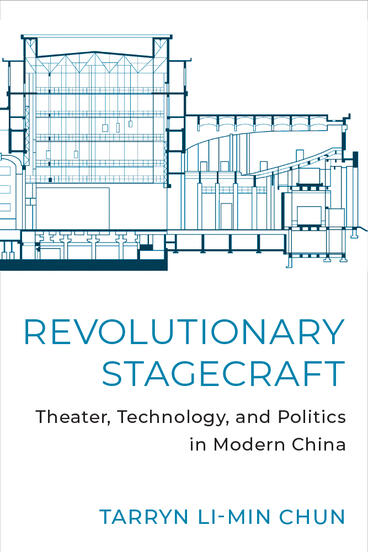Revolutionary Stagecraft
Theater, Technology, and Politics in Modern China
Reveals the deep entanglement of technological modernization, political agendas, and the performing arts in modern China
Description
Revolutionary Stagecraft draws on a rich corpus of literary, historical, and technical materials to reveal a deep entanglement among technological modernization, political agendas, and the performing arts in modern China. This unique approach to Chinese theater history combines a close look at plays themselves, performance practices, technical theater details, and behind-the-scenes debates over “how to” make theater amid the political upheavals of China’s 20th century. The book begins at a pivotal moment in the 1920s—when Chinese theater artists began to import, use, and write about modern stage equipment—and ends in the 1980s when China's scientific and technological boom began. By examining iconic plays and performances from the perspective of the stage technologies involved, Tarryn Li-Min Chun provides a fresh perspective on their composition and staging. The chapters include stories on the challenges of creating imitation neon, rigging up a makeshift revolving stage, and representing a nuclear bomb detonating onstage.
In thinking about theater through technicity, the author mines well-studied materials such as dramatic texts and performance reviews for hidden technical details and brings to light a number of previously untapped sources such as technical journals and manuals; set design renderings, lighting plots, and prop schematics; and stage technology how-to guides for amateur thespians. This approach focuses on material stage technologies, situating these objects equally in relation to their technical potential, their human use, and the social, political, economic, and cultural forces that influence them. In each of its case studies, Revolutionary Stagecraft reveals the complex and at times surprising ways in which Chinese theater artists and technicians of the 20th century envisioned and enacted their own revolutions through the materiality of the theater apparatus.
Tarryn Li-Min Chun is Assistant Professor in the Department of Film, Television, and Theatre at the University of Notre Dame.
Reviews
“Illuminates 20th century Chinese theater from a previously unexplored perspective . . . Drawing on a range of previously untapped original sources, the book not only provides new understandings of Chinese theater technology, but also elucidates how that technology affected the work of playwrights and the scripts they produced.”
- Rosemary Roberts, University of Queensland
“Well-written and meticulously researched, Revolutionary Stagecraft adds an important dimension to studies of modern Chinese theatre by focusing on the technical aspects of stage production. The book has a fascinating throughline that draws together work on ‘proper’ science and technology (e.g., factories, spacecraft) to cultural production, and shows how these discussions are very much interrelated. The analysis is enlightening, the illustrations are wonderful, and many of the conclusions are intriguing.”
- Maggie Greene, Montana State University

